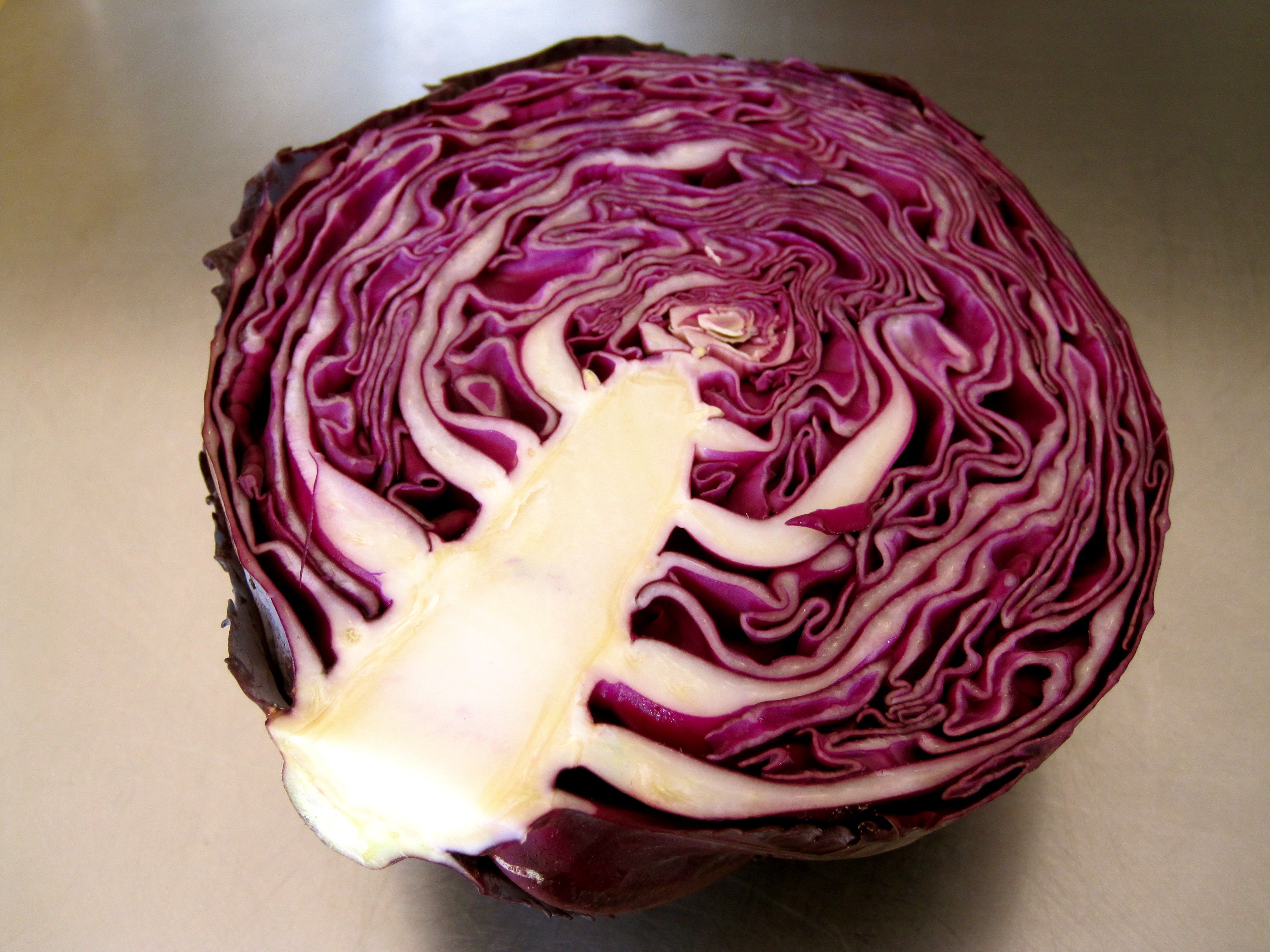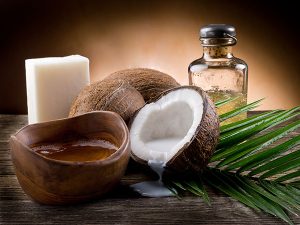Red cabbage: the disease-fighting, gut-healing superfood

Just about everyone has eaten cabbage at one point or another in his or her life, whether as a New Year’s tradition or as part of the regular diet. But did you know that not all cabbage is the same? It’s true. Red cabbage is not the same as green cabbage, and I’m not just talking about color.
Red cabbage, also known as purple cabbage, is a cruciferous vegetable that’s delicious both raw and cooked. It’s often eaten raw in salads, steamed, braised or sauteed with other vegetables. It’s also referenced as red kraut or blue kraut and can provide the much-needed benefits of probiotics in this form due to the fermentation process. In addition, the insoluble fiber from red cabbage is known to prevent constipation, lower the risk of developing diverticular disease and may help relieve the symptoms of some gastrointestinal conditions, such as IBS symptoms.
But that’s not all. Red cabbage benefits extend even further, as you’ll learn below — and why you want to include this tasty veggie in your rotation.
Red Cabbage Benefits
1. Boosts the Immune System
Red cabbage contains ever-so-important vitamin C, a crucial antioxidant needed in order for our bodies to have strong immune systems. It stimulates the activity of white blood cells, forming the first line of defense for the immune system. Nutrient-dense antioxidants such as vitamin C are known to have high antioxidant potency to assist in minimizing harmful effects of reactive species. As one of the top vitamin C foods on the planet, red cabbage is a major immune system booster.
The immune system is extremely vulnerable to oxidant and antioxidant balance, as uncontrolled free radical production can impair its function and defense mechanism. These free radicals can form in the body and promote tissue damage. However, antioxidants are the perfect defense mechanisms for the immune system and can help fight off intruders, including cancer. Additionally, vitamin C is important in the formation of collagen, which keeps our bodies and cells connected and solid. (1)
Due in large part to its vitamin C content, red cabbage is a high-antioxidant food that fights free radical damage and strengthens the immune system.
2. Fights Inflammation and Arthritis
Red cabbage contains inflammation-fighting phytonutrients. A study published in Research in Pharmaceutical Science showed that when testing the effects of the consumption of extracts of cabbage on the immune response, there was a reduction in swelling. (2)
Because inflammation can cause swelling and pain in the joints, such as with arthritis, eating a diet filled with anthocyanin-rich fruits and vegetables like red cabbage should be a part of your daily regimen. These type of anti-inflammatory foods help prevent and naturally treat arthritis and arthritic complications. (3)
3. Aids Healthy Bones and Reduces the Risk of Osteoporosis
Red cabbage is a vitamin K-rich food, and we know that vitamin K increases the amount of a specific protein required to maintain bone calcium, thus reducing the risk of osteoporosis. Some studies on vitamin K have even found that high intakes of it stop bone loss in those who already have osteoporosis, which is why it should be part of any osteoporosis diet treatment plan.
Skeletal tissue is formed during the first two decades of life, and then a constant bone mass is maintained until 40 years of age. In the case of women, the bone mass is rapidly reduced at menopause, and after that, bone mass slowly decreases in both men and women who have passed the 70-year-old mark. This process can lead to increased risk of bone fracture. Since osteoporotic fractures are the third-highest cause for becoming bedridden, the maintenance of healthy bones is an important factor in extending a person’s healthy lifespan. Vitamin K can greatly help maintain bone health and delay or prevent osteoporosis. (4)
4. Combats Chronic Disease
Degenerative or chronic disorders — such as Alzheimer’s disease, ALS, Huntington’s disease and Parkinson’s disease, among others — affect more than 45 million people worldwide and often strike older adults characterized by progressive deterioration of nerve cells, eventually leading to cell death. DNA damage by reactive species is associated with susceptibility to chronic human degenerative disorders. The naturally occurring antioxidants found in the anthocyanins of the red cabbage may prevent or reverse such damage. (5)
In a study from the University of Auckland in New Zealand, the antioxidant activities were compared from the extract of six anthocyanin-rich edible plant, including red cabbage, red lettuce, blueberries, pansies, purple sweet potato skin, purple sweet potato flesh and Maori potato flesh. All but the red lettuce extract were found to reduce endogenous DNA damage in colon cancer cells, showcasing the disease-fighting ability of red cabbage — including its standing among cancer-fighting foods. (6)
5. Promotes a Healthy Gut
We know that probiotic foods provide a good dose of much-needed good bacteria that our digestive systems crave, but what does that have to do with red cabbage? I’m sure you have heard of kimchi. While most kimchi is made from green cabbage, we are seeing more and more kimchi made from red or purple cabbage. This traditional Korean fermented food is manufactured by fermenting vegetables with the probiotic lactic acid bacteria (LAB). Many bacteria are involved in the fermentation of kimchi, but LAB becomes dominant while the putrefactive bacteria are suppressed during salting of baechu cabbage and the fermentation.
Kimchi is considered a vegetable probiotic food that contributes health benefits in a similar manner as yogurt, a dairy probiotic food. It’s common to see other healthy functional foods added to kimchi recipes, such as garlic, ginger and red pepper. Additional health functionality of kimchi may include anticancer properties, anti-obesity benefits, constipation relief, colorectal health promotion, cholesterol reduction, fibrinolytic effect, antioxidative and anti-aging properties, brain health promotion, immune promotion, and skin health promotion. (7)
Red Cabbage Nutrition
One cup (89 grams) of chopped, raw red cabbage has about: (8)
- 28 calories
- 6.6 grams carbohydrates
- 1.3 grams protein
- 0.1 gram fat
- 1.9 grams fiber
- 50.7 milligrams vitamin C (85 percent DV)
- 34 micrograms vitamin K (42 percent DV)
- 993 IU vitamin A (20 percent)
- 0.2 milligram manganese (11 percent DV)
- 0.2 milligram vitamin B6 (9 percent DV)
- 216 milligrams potassium (6 percent DV)
- 0.1 milligram thiamine (4 percent DV)
- 0.1 milligram riboflavin (4 percent DV)
- 16 micrograms folate (4 percent DV)
- 40 milligrams calcium (4 percent DV)
- 0.7 milligram iron (4 percent DV)
- 14.2 milligrams magnesium (4 percent DV)
Red Cabbage vs. Green Cabbage
While both red and green cabbage are good for you, red cabbage packs a more powerful nutritional profile. For example, red cabbage contains about 85 percent of the daily vitamin C our bodies need while the green version provides 47 percent. In fact, red cabbage has more vitamin C than oranges, believe it or not!
Red and green cabbage are two different cabbage varieties, but they have a similar flavor. Red cabbage tends to be more peppery and is usually smaller and denser than green cabbage heads. The leaves of the red cabbage are dark purple or reddish, which comes from the pH levels of the soil in which it’s grown as well as the pigment that comes from the nutritionally valuable anthocyanins in contains.
In acidic soils, the leaves usually grow more reddish, and in neutral soils they grow more purple. This explains why the same plant is known by different colors in various regions. Red cabbage needs well-fertilized soil and sufficient humidity to grow at its best. It’s a seasonal plant, seeded in spring and harvested in late fall.
It’s also important to note that red cabbage is ranked fifth in the Clean 15 on the Environmental Working Group’s Guide to Pesticides in Produce, noted as one of the fruits and vegetables with the lowest amount of pesticide residues. However, if you are concerned at all about pesticide use, go for organic cabbage. (9)
Here’s a little more on how red and green cabbage stack up based on a one-cup serving:
Vitamin A
Red cabbage contains 10 times more vitamin A than green cabbage. Vitamin A helps prevent early stage age-related macular degeneration from progressing due to the lutein and zeaxanthin, which function only as antioxidants in the eyes. Also, it may aid in keeping the skin and immune system healthy. Vitamin A can help maintain healthy teeth, skeletal tissue and mucous membranes too. (10)
Vitamin K
Green cabbage almost twice as much vitamin K as red cabbage contains. Vitamin K regulates bone mineralization by increasing bone density and helps the blood to coagulate.
Vitamin C
Both contain a good amount of vitamin C, which provides antioxidants and collagen protein. The body needs vitamin C to help repair wounds and injuries as well as keeping bones, cartilage and teeth strong and healthy.
Iron
Red Cabbage has double the iron of green cabbage. Iron delivers oxygen to your cells, which helps your muscles perform well during exercise and general day to day activities. Lack of iron in your diet could cause anemia, leading to fatigue.
Anthocyanins: Only in Red Cabbage
Red cabbage is the winner when it comes to antioxidants. Red cabbage contains the nutrient anthocyanin, which is not found in green cabbage. The purple color in red cabbage comes from anthocyanins, and these nutrients provide further evidence of the cancer-fighting flavonoids it contains. Improvement in memory is also a notable characteristic as well as possibly aiding in weight loss due to the release of hormones that can metabolize fat and may suppress appetite. (11, 12)
The Science & History Behind the Red Cabbage
Let’s get into the science behind the beautiful red cabbage. The color of red cabbage (Brassica oleracea var. capitata) is due to the accumulation of anthocyanin. Anthocyanins are water-soluble vacuolar pigments that may appear red, purple or blue depending on the pH. They belong to a parent class of molecules called flavonoids. Anthocyanins occur in the tissues of plants, including leaves, stems, roots, flowers and fruits.
A study investigated the regulatory control of anthocyanin production in red cabbage. Both green and red varieties were examined. While the four green varieties had negligible amounts of anthocyanins under normal growth conditions, the four red cultivars contained more, which means that they have more flavonoids than the green versions. Overall, the amount of total anthocyanins in red cabbage was found to be a direct correlation to the total antioxidant power it provides, implicating the potential health benefit of red cabbage to human health. And anthocyanins can aid in healthy weight loss because they help the body release hormones that metabolize fat and may ultimately suppress your appetite. (13)
The original Brassica oleracea ancestor is native to the Mediterranean region of Europe. Although wild B. oleracea is believed to have been cultivated for several thousand years, its history as a domesticated plant is not certain before Greek and Roman times. However, we think that is was Cato, a Roman statesman, who believed it should be eaten raw with vinegar and may be where coleslaw originated. Pliny, in his work, Natural History, focused on the medicinal qualities of red cabbage, in particular when taken internally and when used as a poultice.
The word cabbage is an Anglicized form of the French caboche, meaning head. The Celts of central and western Europe had much to do with the distribution and popularization of cabbage as a food plant. While the introduction of cabbage into Europe has been generally ascribed to the Romans, it seems probable that the Celts introduced it even earlier. In southern Europe, the Mediterranean area developed those forms of cabbage that are tolerant to warm climates. It was not until 1536 in Europe that unmistakably clear descriptions of cabbage were recorded.
Cabbage was introduced to America in 1541–42 by Jacques Cartier, who planted it in Canada on his third voyage. Because of its popularity among Europeans, it was thought to have been planted in what is now the U.S. by some of the earliest colonists, although there is no written record of it until 1669. In the 18th century it was grown by American Indians as well as by the colonists.
Soon after the first domestication of plants, ancestral cabbage was grown as a leafy vegetable around the Mediterranean. Because the leaves were the part of the plant consumed, those plants with the largest leaves were selectively propagated for next year’s crop. It’s possible that the continued preference for ever-larger leaves may have led to the vegetable we now know as kale (known botanically as Brassica oleracea, var. acephala “headless cabbage”).
The round-headed form is the oldest of the hard types of cabbage and is the only one described during the 16th century. In the 17th century, flat-headed and egg-shaped varieties appeared, and in the 18th century conical or pointed kinds were first described.
Germany, France and the Low Countries were the most productive of new varieties — in fact, most of the varieties grown in the U.S. today originated in Germany and the Low Countries.
Red cabbage was first described in England in 1570, all of the early varieties being round-headed. Now there are red varieties of all the various head shapes. The red color is confined to the skin of each leaf and stem, the cells beneath possessing normal green or white color. When cut before cooking, a head of red cabbage presents a pretty contrast of red and white. (14, 15)
How to Use Red Cabbage
There are numerous ways to prepare red cabbage, such as red cabbage slaw, braised red cabbage, steamed red cabbage or simply eating it raw in salads. When cooking, red cabbage normally turns blue. However, if you want to retain the red color, you need to add apple cider vinegar or acidic fruit to the pot.
Like most plants that we eat, once heated, the nutritional benefits begin to diminish. A study was conducted showing just how this works with red cabbage. As noted, red cabbage has many nutritional benefits, in particular due to being an anthocyanin-rich plant. The study investigated the effects of domestic cooking methods, including steaming, microwave heating, boiling and stir-frying on the nutritional quality of red cabbage. Compared with fresh-cut red cabbage, all cooking methods were found to cause significant reduction in anthocyanin and total glucosinolates contents. Moreover, steaming resulted in significantly greater retention of vitamin C and free radical-scavenging activity, while stir-frying and boiling, very popular in Chinese cooking methods, led to significant losses of total phenolic, vitamin C and free radical-scavenging activity as well as the reduction of sugars. (16)
Red cabbage, served raw and consumed fresh in salads, maintains the highest nutrition. However, if you choose to cook it, you may want to consider the habits of Asian cuisine. It’s recommended to use less water and less cooking time, such as steamed-based, to retain the optimum benefits of the health-promoting compounds. Also, a light rinse allows you to retain important, healthy, gut-enhancing bacteria that I talk about in my book “Eat Dirt.”
Red Cabbage Lemon and Tahini Slaw with Quinoa
INGREDIENTS:
- 6 cups of chopped red/purple cabbage
- 2 celery stalks, chopped in very small pieces
- 2 carrots, shaved with a peeler
- 1 red pepper, thinly sliced
- 1 cup of fresh parsley, finely chopped
- ¼ cup fresh cilantro, finely chopped
- 4 tablespoons of toasted pumpkin seeds
- 1 cup uncooked white quinoa
Lemon and Tahini Dressing
- 1 large garlic clove, minced
- 1/4 cup pure tahini
- 1/2 cup fresh-squeezed lemon juice
- 4 tablespoons nutritional yeast
- 1 tablespoon maple syrup (optional)
- 2 tablesoons extra virgin olive oil
- Pinch of fine sea salt
- ⅛ teaspoon black pepper
DIRECTIONS:
- Prepare the quinoa on the stove using 1 cup uncooked quinoa and 2 cups water. Bring to a boil, then put on low for 9–10 minutes. Remove from heat and set aside to cool.
- Toast the pumpkin seeds in a sauté pan on the stove. Watching closely as they can burn quickly. Remove and set aside to cool.
- Bring a few cups of water to a boil.
- Lightly rinse the cabbage and cut into quarters, then roughly chop. You can chop into small pieces or long, skinny pieces.
- Place the chopped cabbage into a colander in the sink and pour the boiling water over the top to help soften it just a bit.
- Quickly rinse with cold water so we don’t lose the nutritional benefits of mostly raw cabbage. Gently dry the cabbage with a hand towel.
- Using a large bowl, mix the chopped celery, pepper, cabbage, cilantro and parsley.
- Add the dressing and gently blend with the vegetables until all vegetables are well-coated. Place portions on the plate and top with the toasted pumpkin seeds.
This blend is also great with hummus in gluten-free or sprouted wrap! Ezekiel has a great sprouted wrap option.
Note: If you have extra salad and dressing, keep them separate until ready to serve. Also, this recipe is delicious raw. Rinsing the red cabbage in hot water is optional.
Red Cabbage Takeaways
- Red cabbage is a cruciferous vegetable that’s been shown to prevent constipation, lower the risk of diverticulitis, boost the immune system, fight inflammation, treat arthritis, aid healthy bones, reduce the risk of osteoporosis, fight chronic disease, promote a healthy gut and treat gastrointestinal issues.
- While both red and green cabbage are good for you, red cabbage packs a more powerful nutritional profile. For example, red cabbage contains about 85 percent of the daily vitamin C our bodies need while the green version provides 47 percent.
- Red cabbage, served raw and consumed fresh in salads, maintains the highest nutrition. However, if you choose to cook it, you may want to consider the habits of Asian cuisine. It’s recommended to use less water and less cooking time, such as steamed-based, to retain the optimum benefits of the health-promoting compounds.









